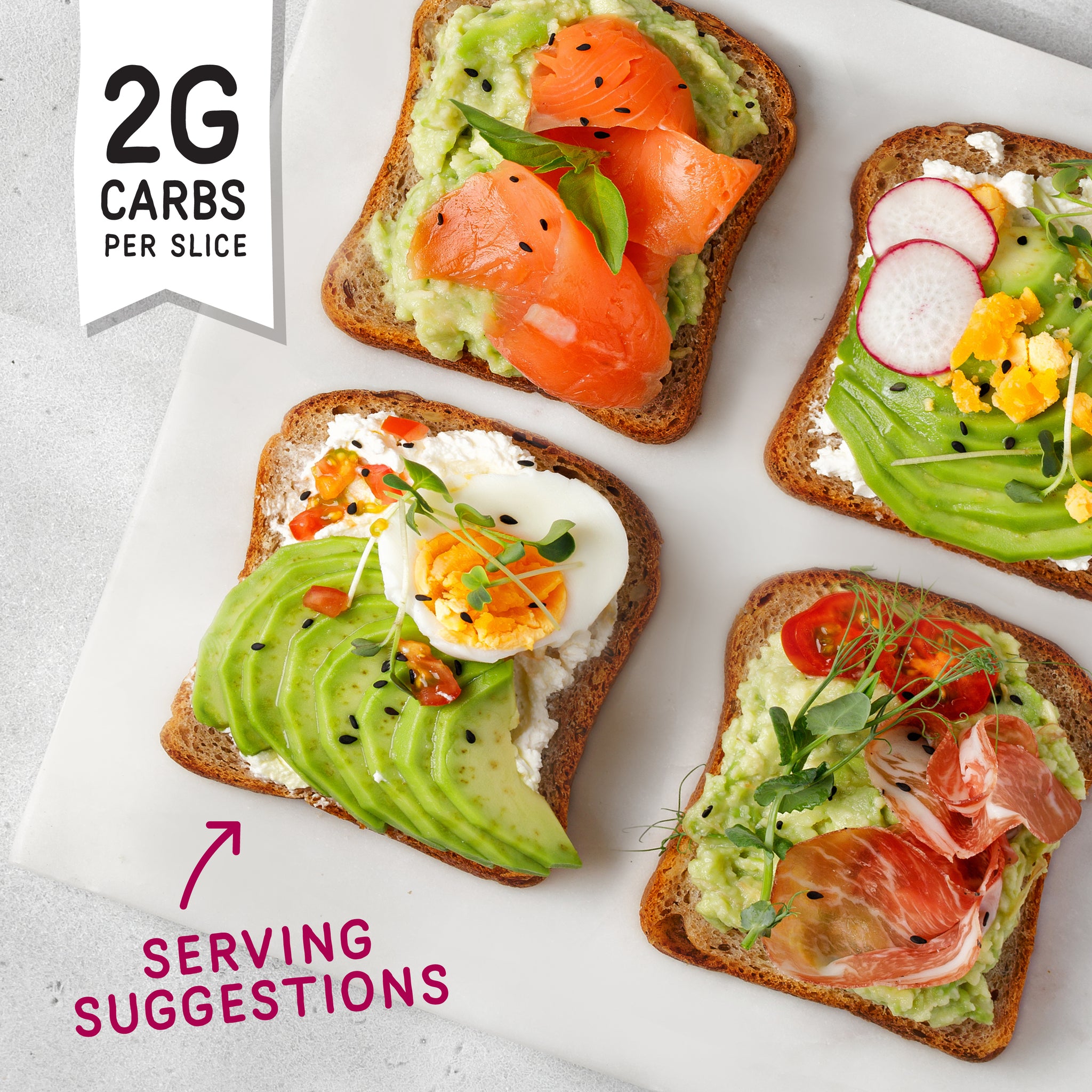Bread has been a staple in all kitchens and for many years, it was seen as an antithesis of weight-management and healthy lifestyle. The perception of bread is beginning to change with the introduction of bread that is calorie-free. Unlike the heavy, calorie-dense breads of the past, calories bread is specially designed to provide lesser calories per slice while not losing taste or texture. With the addition of nutrients-rich components like flax seeds, and plant-based proteins, bakers are reinventing what bread can be. Instead of being an indulgence that dieters avoid, calorie bread is becoming a daily essential that allows people to enjoy sandwiches, toast, and wraps without the guilt. This bread is great for those who want to lower their intake of calories while still enjoying comfort foods.

Image credit: fitbakes.co.uk
No Carb Bread: A Promise of No Carb Bread
While calorie bread focuses on cutting down on calories however, no carb bread is designed to minimize carbohydrate intake almost entirely. While these breads are not carb-free, come remarkably close. They replace the traditional wheat flour with different flours like almond, coconut, or psyllium. The result is bread that is similar to bread, tastes similar to bread, and tastes like bread without the carbs that impedes ketogenic diets and elevates blood sugar levels in diabetics. For people who once had to cut out sandwiches and breakfast toast, no carb bread seems like a tiny miraculous event. It lets you remain on track with your dietary goals and having the same routines. The bread is not only to satisfy nutritional requirements, but it also restores a feeling of normalcy to those who thought that bread was a forbidden food.
Low Carb Breads and the Nutriental Change
Low-carb breads can be a healthier alternative to traditional loaves, and also a no carb bread. Low carb breads provide a balanced alternative to traditional breads. They aren’t able to completely eliminate carbs, but do decrease the amount of them, while increasing fibre and protein. They stand out due to their high content of seeds that can be as high as 17%, which adds texture healthy fats, the omega-3 fatty acids. This shift toward nutrient-dense bread signifies a significant change in the demand of consumers. The people aren’t satisfied with empty calories; they require foods that actually support their health. Low carbohydrate breads can help meet this demand. They aid in weight loss, support digestive health, and provide energy throughout the day. The fitness-minded will appreciate that these breads provide a convenient and healthy method to increase protein, while maintaining a low carbohydrate level. They are ideal for recovery of muscles, well-balanced nutrition, and weight management.
Low Calorie Sandwiches for Modern Living
Sandwich wraps with low calories are an ideal choice for people who live in a fast-paced lifestyle. Unlike heavy tortillas or pita breads, which can cause unnecessary calories to meals They are light flexible, versatile, and made for those who are constantly at the move. They have under 100 calories for each wrap, so they can be filled with nutrient-rich ingredients like lean meats or fresh veggies. They are not only low in calories but also versatile. You can make use of them to create creative dinner options such as pizza bases, breakfast burritos, or lunch wraps. Sandwich wraps that are low in calories are an easy method to satisfy hunger, without having to resort into fast food. They’re an excellent illustration of how eating well does not have to be restrictive or complicated. They can also be tasty, convenient, and eco-friendly.
Conclusion Bread Without Compromise
The bread landscape is changing. It is a sign of a larger shift towards healthier and smarter eating. Breads that are high in calories help you shed weight without giving up comfort food. No carb bread supports those who are following ketogenic diets or diabetic-friendly ones. Breads with low carbs are the necessary nutrients that helps to fuel active lifestyles. Sandwich wraps that have low calories bring convenience to the table without sacrificing nutritional value. These innovations demonstrate that bread doesn’t need to be a hindrance to good health. Instead, it can be an asset. This new generation of bread is ideal for those who wants to strike a balance between taste and health.